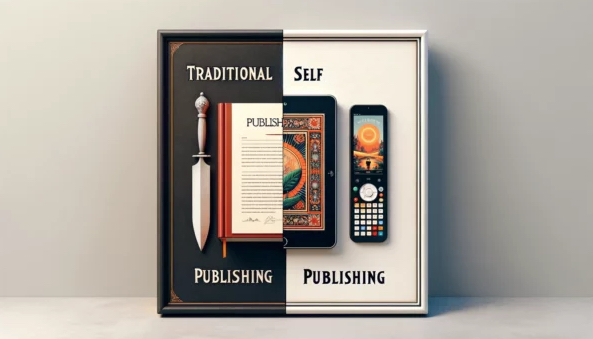
In the world of audiobooks, sound is more than just a voice reading the text—it’s the key to creating an immersive experience that transports listeners into the heart of a story. The right sound effects can turn a simple narrative into a vivid scene, making the characters and their world come alive. Whether it’s the subtle rustling of leaves, the distant rumble of thunder, or the soft strum of a guitar, well-chosen audio elements can elevate storytelling to new heights. However, while sound effects can add depth and emotion, misusing them can easily distract or overwhelm the listener. This article will guide you throughhow to incorporate sound effects into audiobooks, showing you how to enhance your story without taking away from the narration. Let’s explore how to find sound effects that strike the perfect balance, keeping your audience engaged while adding just the right touch of sound to amplify the listening experience.
Incorporate Sound Effects into Audiobooks – Planning and Preparation
When it comes to incorporating sound effects and music into your audiobook, planning and preparation are key. Before you start recording, consider the following steps to ensure a smooth and effective process:
- Define the Tone and Atmosphere: Start by defining the tone and atmosphere you want to create with your sound effects and music. This will help you choose the right sounds and music to enhance the listening experience. Whether it’s a suspenseful thriller or a heartwarming romance, the audio elements should align with the story’s mood.
- Identify Key Scenes: Pinpoint the key scenes and moments in your audiobook where sound effects and music can add the most impact. These are the moments where audio elements can significantly enhance the narrative, making the story more immersive for the listener.
- Gather Resources: Research and gather a library of sound effects and music that fit your tone and atmosphere. Utilize online resources such as sound effects websites, music libraries, and royalty-free music platforms. Having a diverse collection of sounds at your disposal will make the production process smoother.
- Consider Professional Help: If your budget allows, consider hiring a professional sound designer or composer to create custom sound effects and music for your audiobook. Their expertise can elevate the production quality and ensure that the audio elements perfectly complement your narration.
- Obtain Licenses and Permissions: Make sure to obtain the necessary licenses and permissions for any copyrighted music or sound effects you plan to use. This will prevent any legal issues and ensure that your audiobook can be distributed without complications.
By taking these steps, you’ll be well-prepared to incorporate sound effects and music into your audiobook, enhancing the overall listening experience.
Your Publishing Journey Awaits – Start NowWhy Use Sound Effects in Audiobooks?
Sound effects are a powerful tool in storytelling, capable of transforming an ordinary audiobook into an engaging, cinematic experience. By adding layers of audio, you can transport listeners directly into the world of your characters, creating a sense of presence that mere words alone can’t always achieve.
When used thoughtfully, sound effects can heighten emotions, build tension, and emphasize key moments without overshadowing the narration. However, the key is balance: the sound should enhance the story, not compete with the voice of the narrator. The goal is to add value to the narrative by making it more vivid and engaging while ensuring that listeners remain focused on the unfolding plot. Done right, sound effects can elevate your audiobook, turning it into an immersive experience that holds the audience’s attention from start to finish.
Choosing the Right Sound Effects: What Works Best
Selecting the right sound effects for your audiobook can make all the difference in how your story resonates with listeners. The key is to choose effects that align with the tone, mood, and context of your narrative. For example, if your audiobook is a suspense thriller, subtle sounds like distant footsteps, creaking doors, or a faint heartbeat can amplify the tension. In contrast, a romantic scene might benefit from soft ambient sounds like ocean waves or birds chirping in the background. Always aim for effects that naturally blend with the scene, enhancing emotions without stealing focus from the narration.
When choosing sound effects, it’s important to consider quality. High-quality effects will sound crisp and realistic, ensuring they don’t distract listeners with artificial or out-of-place noises. Look for collections that offer a wide range of options, including both subtle and dramatic sounds to fit different moments in your own audiobook. Additionally, selecting a professional narrator is crucial to bringing the story and characters to life, thereby enhancing listener engagement and delivering a more immersive experience.
Finding the right sound effects is easier than ever, with numerous online resources available to search through. Websites like FreeSound, Zapsplat, and SoundBible offer a variety of free sound effects, while platforms like AudioJungle and SoundSnap provide premium options for more polished, professional audio. By exploring these resources, you can find the perfect sounds to complement your story and elevate the listening experience for your audience.
Balancing Sound Effects with Narration
When incorporating sound effects into an audiobook, the narrator’s voice should always remain the primary focus. The narration drives the story, and the role of sound effects is to subtly support and enhance that journey, not overshadow it. To achieve this balance, it’s crucial to use sound effects sparingly and with purpose, ensuring they blend seamlessly into the narrators’ backgrounds.
The audio version of books offers the advantage of engaging listeners while multitasking, such as during commutes, household chores, workouts, or driving. This customizable aspect of recordings enhances the overall experience and keeps the listener engaged.
Your Publishing Journey Awaits – Start NowOne effective strategy is to introduce sound effects at lower volumes, so they complement the voice without competing with it. Gradual fades in and out can also help, making the transition between narration and sound smooth and natural. Avoid abrupt or loud effects that can jar the listener out of the experience and create awkward pauses.
Using Background Music in Audiobooks: Do’s and Don’ts
Adding background music to audiobook scenes can be a powerful way to enhance the atmosphere and overall production quality. When you add music, it can evoke emotions, set the mood, and create a more immersive experience for listeners. For example, soft, melodic tunes can enhance a romantic scene, while suspenseful music can build tension during a thriller’s climax. However, poorly chosen or overused music can easily distract from the narration, pulling the listener out of the story.
To ensure background music enhances rather than detracts from your audiobook, it’s essential to choose pieces that match the tone and pacing of the scene. Opt for instrumental music that doesn’t compete with the narrator’s voice, avoiding tracks with lyrics or overly complex melodies that might divert the listener’s attention. It’s also a good idea to vary the music throughout the audiobook, so it doesn’t become repetitive or predictable.
Another critical guideline is to keep the volume of the background music low, allowing it to subtly support the narration without overpowering it. With careful selection and mindful use, background music can elevate the listening experience, making your audiobook even more engaging and memorable.
Sound Quality Matters: Ensuring a Professional Listening Experience
High production quality is essential in creating a professional audiobook that captivates listeners from start to finish. Even the most compelling story can fall flat if the sound design is poorly executed. Clear, crisp audio not only enhances the listener’s experience but also reflects the overall quality of your production, helping your audiobook stand out in a competitive market.
AI technology can be a game-changer in audiobook production. Advanced AI recording tools can automatically adjust audio levels, clean up background noise, and enhance clarity, making it easier to achieve a polished, professional sound. By leveraging these tools, you can streamline the production process, ensuring your audiobook meets industry standards and delivers a seamless listening experience.
Editing and Mixing: Bringing it All Together
Editing and mixing are crucial steps in integrating sound effects, narration, and music to create a cohesive audiobook. The editing process involves carefully placing each sound effect and music track in sync with the narration, ensuring that every element enhances the story rather than distracts from it. The goal is to create a seamless flow where sounds naturally blend with the narrative, guiding the listener’s emotions without drawing attention away from the story.
When it comes to tools, software like Adobe Audition, Audacity, and Reaper are popular choices for audiobook recording, production, and editing. These tools offer advanced features for mixing, noise reduction, and audio enhancement, making it easier to achieve a professional-quality sound.
Genre-Specific Considerations
Different genres of audiobooks may require different approaches to sound effects and music. Here are some genre-specific considerations to keep in mind:
- Science Fiction and Fantasy: For science fiction and fantasy audiobooks, consider using sound effects and music that create a sense of otherworldliness and wonder. Futuristic sounds, magical chimes, and ethereal music can transport listeners to new and imaginative worlds.
- Horror: For horror audiobooks, consider using sound effects and music that create a sense of tension and fear. Creepy ambient sounds, sudden noises, and eerie music can heighten the suspense and keep listeners on the edge of their seats.
- Children’s Books: For children’s audiobooks, consider using sound effects and music that are fun and engaging, but not too overwhelming or scary. Playful sounds, cheerful music, and gentle effects can make the story more enjoyable for young listeners.
- Non-Fiction: For non-fiction audiobooks, consider using sound effects and music that are more subtle and understated. Background music and sound effects should enhance the educational or informative content without distracting from the narrator’s message.
By tailoring your approach to the specific genre of your audiobook, you can use sound effects and music to enhance the storytelling and create a more immersive and enjoyable listening experience.
Enhancing Audiobooks with Sound Effects the Right Way
Incorporating sound effects into audiobooks can elevate the listener’s experience, making stories more vivid and immersive. The key points to remember are to choose sound effects that match the tone, blend seamlessly with the narration, and maintain high production quality. Don’t be afraid to experiment and play with different effects to find what best enhances your audiobook, but always prioritize balance. Subtle, well-placed audio elements will enrich your storytelling without overwhelming it, creating a more engaging experience for your audience. With the right approach, sound can truly transform your audiobook into something unforgettable.
Ready to start your publishing journey? Upload your manuscript to Spines today! Not only do we bring your words to life in print and digital formats, but we also offer audiobook services to expand your reach even further. Imagine your story narrated by professional voice artists, making it accessible to listeners everywhere. Let Spines transform your manuscript into an immersive experience across all formats!
Your Publishing Journey Awaits – Start Now






